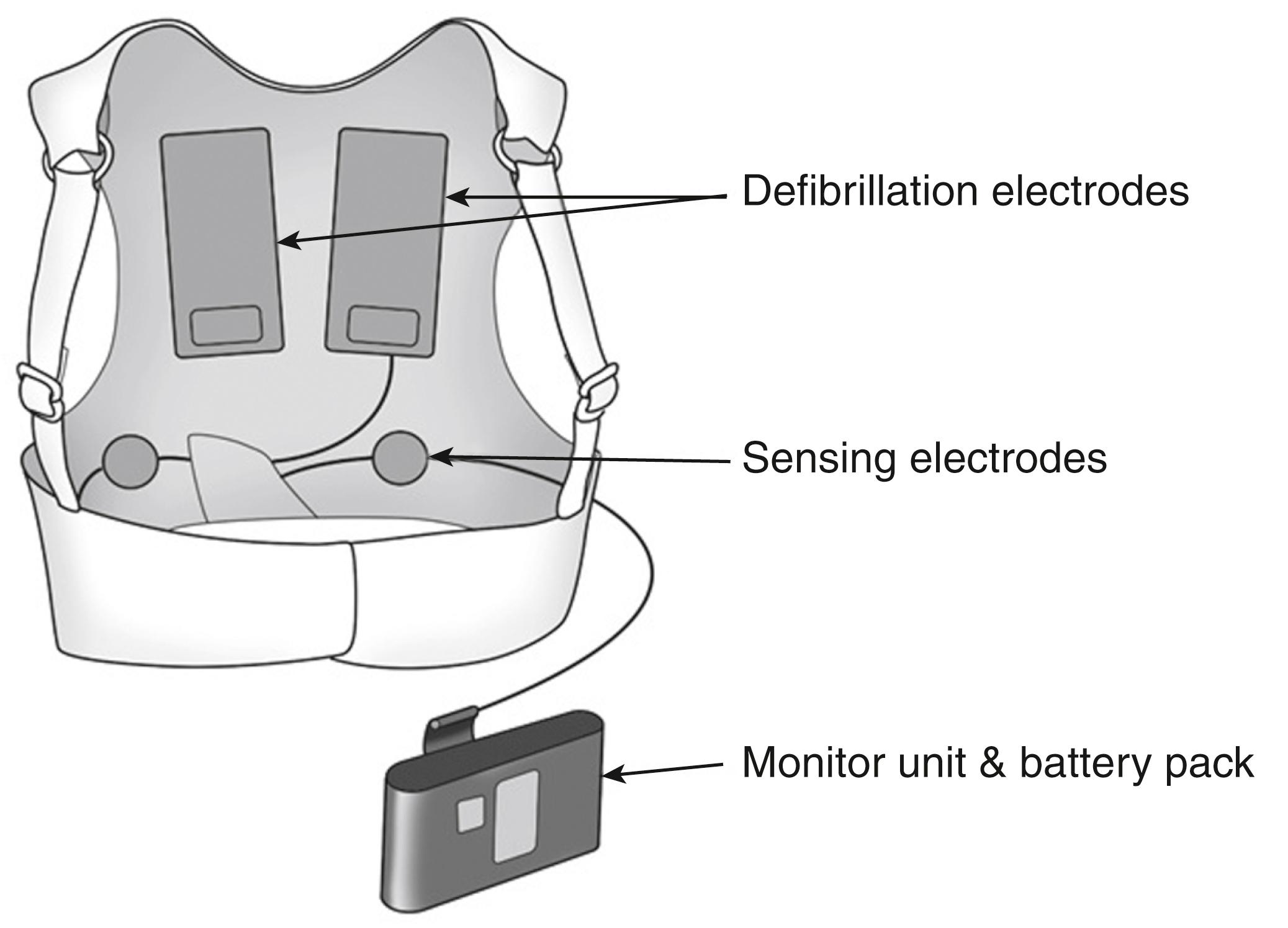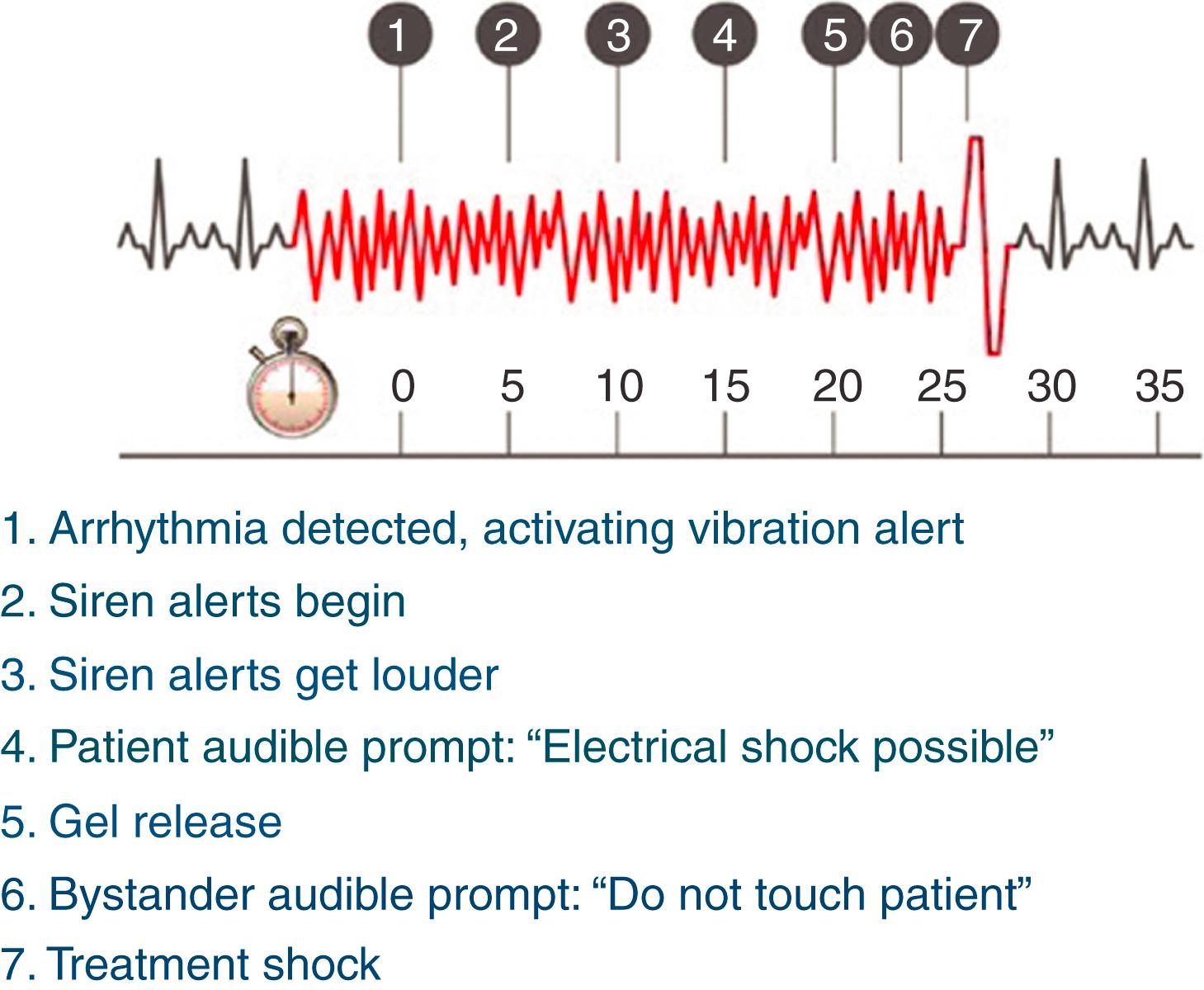Physical Address
304 North Cardinal St.
Dorchester Center, MA 02124
Risk stratification of sudden cardiac death (SCD) remains challenging, with only a small proportion of high-risk individuals identified through conventional discriminators, such as ejection fraction (EF). Yet sudden death continues to be the leading cause of quality-adjusted life years lost because of any medical illness. Implantable cardioverter-defibrillators (ICDs) have demonstrated clinical efficacy in the prevention of SCD in various populations, including those with ischemic and nonischemic cardiomyopathy with severe ventricular dysfunction. Various society guidelines have recommended ICD implantation in select groups of high-risk patients. However, there remains a substantial proportion of patients at increased risk for SCD in the absence of conventional indications for ICD, or where ICD implantation is temporarily contraindicated. In these cases, the wearable cardioverter-defibrillator (WCD) is often considered an alternative means for SCD prevention.
Currently, the only WCD commercially available is the Zoll LifeVest (Zoll Medical). , The WCD consists of a vest connected to a monitor unit ( Fig. 124.1 ). The vest has dry electrocardiogram (ECG) sensing electrodes and three defibrillation electrodes with automated gel extrusion to facilitate defibrillation. The vest is worn underneath clothing for skin contact and weighs approximately 1 kg. The monitor unit weighs 0.85 kg and is typically worn around the waist and contains the defibrillation capacitor, battery, processor, and response buttons.

The WCD functions similarly to conventional ICDs, and employs an arrhythmia detection algorithm that includes programmable heart rate zones, detection duration, rhythm stability, template matching, and multipolar and unipolar configurations for detections. Once an arrhythmia is detected, an alarm sequence is triggered that includes a series of blinking LED signals and audible and tactile warnings to alert the patient of an impending shock ( Fig. 124.2 ). At this point, the response button can be depressed to abort the shock; if not depressed, gel is extruded from the defibrillation electrodes and up to 5 biphasic shocks (max 150 J) can be delivered by the unit. The WCD does not provide antitachycardia or antibradycardia therapies.

In addition, the WCD can function as an external loop recorder (not the commercial product), and perform automated transmissions of arrhythmia including treated episodes, untreated episodes, asystole, and pauses if detected. The battery must be recharged regularly, and the unit itself must be replaced after each series of defibrillations.
The first use of the WCD was reported in 1998, and the device was subsequently approved by the US Food and Drug Administration (FDA) in 2002. In the first report, the authors evaluated the WCD in 15 cardiac arrest survivors. As part of a routine electrophysiologic study or during ICD testing, patients were placed under conscious sedation and ventricular fibrillation (VF) was induced. An episode of ventricular tachycardia (VT) or VF was induced in 10 of 15 patients. Among patients with induced VT/VF, the mean age was 63 ± 12 years, with a mean EF of 21 ± 5%. The device correctly identified the arrhythmia in 9 of 10 patients, with VT not detected in one patient because of erroneous placement of the sensing electrodes. The WCD successfully terminated VF in all patients with a monophasic 230 J shock.
Various national registries and studies have since demonstrated the efficacy of the WCD. In a U.S. national registry of 3569 patients wearing the WCD, 59 patients had 80 sustained VT/VF events. The mean age of patients was 59.3 ± 14.7 years and were predominantly male (74%). Among the 80 VT/VF events, first shock termination of VT/VF was successful in 79 events (99%) and successful in all 76 cases of unconscious VT/VF. Unfortunately, eight patients died despite successful conversion of VT/VF. In a German study of 6043 patients wearing the WCD, patients had a median age of 57 years and were predominantly male (78.5%). During a cumulative wear time of 1124 patients, there were 94 patients shocked for VT/VF; 88 of 94 patients were successfully converted to a slower heart rhythm with the WCD shock. The VEST trial was the first randomized trial evaluating the WCD. This study enrolled patients with EF ≤35% immediately after a myocardial infarction (MI); 2302 patients were randomized in a 2:1 allocation to receive the WCD in addition to guideline-directed medical therapy, or medical therapy alone. Among the 1524 patients randomized to receive the WCD, the mean age was 60.9 ± 12.6 years, with predominantly men (72.8%) with medical comorbidities (i.e., hypertension, 65%; diabetes, 33%; prior MI, 25%; smoking, 37%). During the 90-day follow-up period, 20 patients in the WCD arm received shocks from the WCD and all shocks successfully terminated the arrhythmia. These studies indicated that with appropriate application, defibrillation efficacy of the WCD is expected to approach 100%.
When the WCD detects an arrhythmia meeting the detection criteria, a progressive alarm sequence is activated, including vibratory, visual, and audible warnings. Conscious patients can typically press the response buttons to abort or delay the shock, thereby reducing the frequency of inappropriate shocks from the WCD. When the response buttons are not depressed, the device will complete charging, announce the impending shock to ensure surrounding individuals “stay clear,” and defibrillate the patient.
In the VEST trial, approximately 72% of patients had at least one device alarm, and 146 patients (9.6%) experienced more than 100 alarms ; 4.5% of patients used the response buttons and aborted shocks from the device. Inappropriate shocks occurred in 9 patients (0.6%) in the WCD group in the VEST trial. In the WEARIT-II Registry of 2000 patients, inappropriate shocks occurred in only 10 (0.5%) of the full cohort, primarily because of ECG artifacts. In the German cohort of 6043 WCD patients, inappropriate shocks occurred in 26 patients (0.4%) or an incidence rate of 2.3 per 100 patient-years. In a WCD meta-analysis, the inappropriate shock rate was 2 shocks per 100 persons over a 3-month period.
Although relatively infrequent, potential risk factors or triggers for inappropriate shocks should be identified and addressed, wherever possible. Typically, inappropriate shocks occur when there is both inappropriate detection of arrhythmia and failure to press the response buttons. In a review of US registry patients, Chung and colleagues reported that various factors can cause inappropriate detection, including signal noise or artifact, supraventricular tachycardia, and other reasons. Failure to press the response buttons may occur if the patient is sleeping, or in the presence of mental or physical obstacles. These factors and their corresponding likelihood have been summarized in Box 124.1 .
Signal noise or artifact (68%)
Supraventricular tachycardia (27%)
Nonsustained ventricular tachycardia (6%)
Overcounting normal cardiac signal (4%)
Signal loss (4%)
Patient is unconcerned or inconsistent (33%)
Patient is sleeping (27%)
Presence of mental or physical obstacles (16%)
Patient did not hear the alarms (4%)
Become a Clinical Tree membership for Full access and enjoy Unlimited articles
If you are a member. Log in here